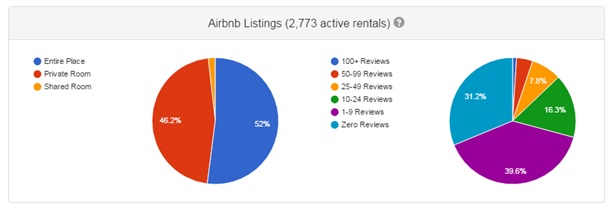The 41st edition of Tianguis Turistico was held towards the end of April at Expo Guadalajara, the largest exhibition centre in Mexico. The event was an important platform for hoteliers and the travel industry to come together. Thousands of exhibitors and visitors from across the globe gathered under one roof for promoting their brand and network with peers.
Like previous years, I was at the event and got a chance to interact with the revenue management & travel technology professionals.
Julian Lindt (extreme right) at a partner stand
Here are some of the key trends that were discussed during the show.
Surge in Luxury Inbound Tourism
Mexico is one of the finest luxury travel destinations and ranks among the top five favorite places for luxury tourism. Various exotic destinations, warm weather and a wide range of holiday activities attract a significant number of travellers to Mexico. Accordingto a Euromonitor International report in 2014, the country saw a double-digit growth in inbound travel which is much higher than overall Latin American and global growth rates. In the same year, Mexico welcomed around 19.3 million international tourists and the most surprising part is business travel amounted 9.9% of all travel expenditure and is expected to grow by another 6.5% in 2016. The tourism industry contributes 8.4% to Mexico’s GDP and as the economy of the country is growing strong compared to other developing countries travel expenditure is also growing rapidly.
Strong growth of online intermediaries
In 2015, Mexico hadaround 65.1 million internet users and by the end of this year the figure is projected to grow to 70.7 million users. An eMarketer report suggests that the country holds number 2 position when it comes to smartphone audience size – 47.4% of all mobile phone users in Mexico have smartphones. Due to high internet penetration and increase use of smartphones, online travel has grown rapidly. At the same time, online travel agents have also gained popularity among Mexican travellers who are adapting quickly to the global trends of using the internet and mobile devices to plan and pay for business or leisure trips. As the technology has been constantly evolving, online intermediaries are also looking for new ways to offer new products and services in order to attract more consumers.
Rise of alternate lodging options
Driven by the increase in use of internet and smartphone users, peer-to-peer alternative accommodation options are growing fast in Mexico. Travellers have been exploring new online platforms like Airbnb. In Mexico City alone, Airbnb has 2773 listings – two-thirds of which are comprised of homes and apartments. Hotels have already started feeling the effect of Airbnb’s approach to room rentals and its continued growth has forced hotels to reduce room rates.
The advancement in technology has changed the online travel scenario in Mexico – the way travellers research and select their preferred accommodations. As modern travellers are more price sensitive and are looking for alternate methods of experiential stays, hoteliers need to have a well-defined value proposition coupled with strong online presence. Not only should they participate in global OTAs, hotels should tap the potential of regional channels as well as meta search engines to drive direct bookings while at the same time have a strong marketing strategy to offer their guests with personalised experience.
 Julian Lindt is the Latin America Sales Director at eRevMax. He can be reached at julianl@erevmax.com.
Julian Lindt is the Latin America Sales Director at eRevMax. He can be reached at julianl@erevmax.com.


